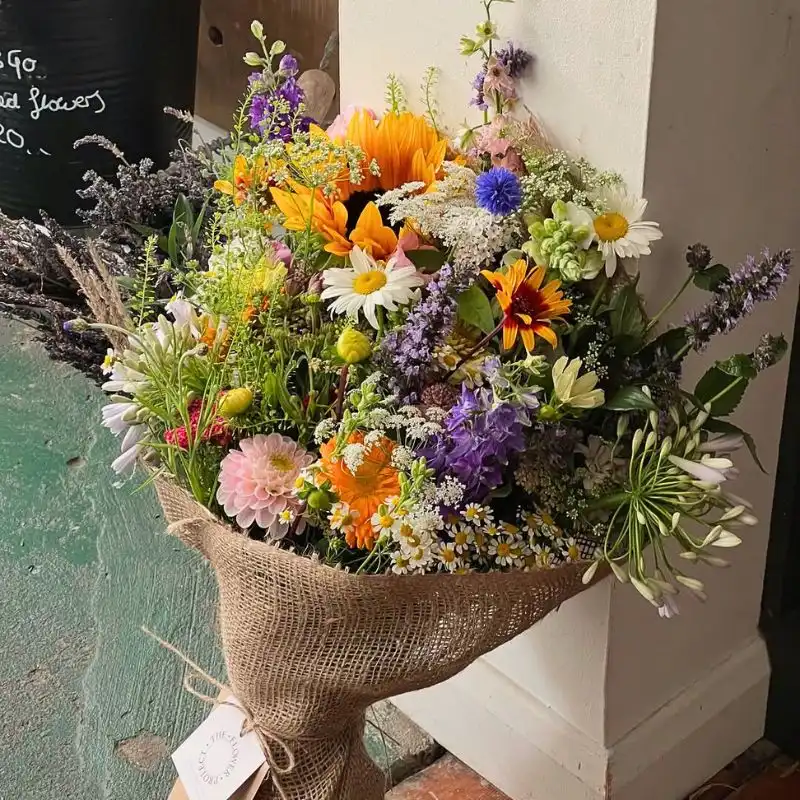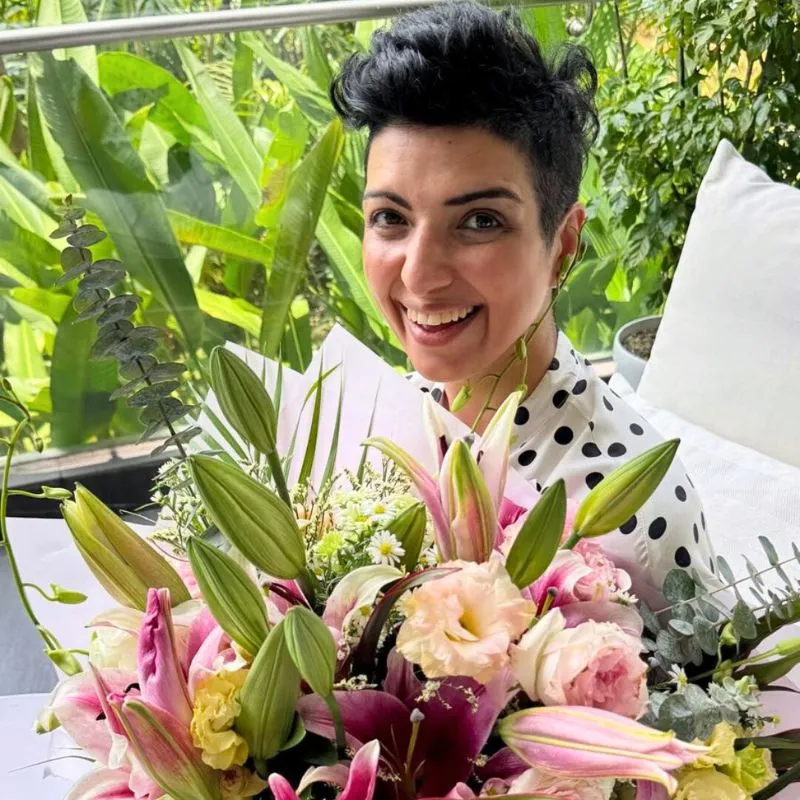Dutch summer flower grower Maurits Keppel is known to cultivate niche products sustainably and with the best shelf life. Although he is very active throughout the year, as a producer of summer flowers, his harvesting season is in the spring and summer. His season starts in April with Phacelias, moving onto wonderful, unique flowers like Papaver, Anethum, Veronica, Zinnia, and on and on. Every few weeks, something new sprouts from his gardens. This week's scoop: Phacelia.
Phacelia Tanacetifolia
Phacelia is a beautiful, soft flower that blooms well in a vase. Each bud becomes a flower and blooms open with large, spacious pollen threads. For Utrecht-based Maurits Keppel, cultivating these unique floral products, particularly in a sustainable way, while ensuring they have the best shelf life, is his foremost goal. Therefore, his Phacelias are organically grown and Skal-certified.
Botanically named Phacelia tanacetifolia, this one is a species of flowering plants in the borage family Boraginaceae. It's known by other common names such as Lacy Phacelia, blue tansy or purple tansy, scorpion flower, or heliotrope. With its unique qualities, this cut flower is quite a sensation. It has a nice color that mainly manifests itself in spring. This, alongside its subtly sweet scent, is a quality that makes it even more special. Maurits loves its soft lilac color and its sweet perfume smell. One reason this flower is also used in the perfume industry.

Attracting Bees
Other than its obvious beauty, it is also a wonderful plant for attracting bees and other beneficial insects, particularly useful in early spring, if it has overwintered. The plant, then, offers an early pollen source for these beneficial insects coming out of hibernation. Maurits notes that this flower is, probably for that reason, also known as bee bread.
Characterized by its attractive spring color and slightly sweet fragrance, these flowers are sometimes used in the production of perfumes. This means they are also ideal for floral potpourri. Likewise, these flowers have a soft lilac color and can be cut for use in floral arrangements when one or two small flowers have opened. The entire branch of phacelia tends to bloom well when placed in a vase.
Typically sown before winter, the flowers open one by one and darken in color as they mature. They are known to be among the first flowers to bloom in spring; hence, due to their natural appeal to beneficial insects, they are considered a suitable plant for organic cultivation. The cutting period for phacelia usually lasts around four to five weeks, providing a relatively short window to enjoy this uniquely clean product.

Maurits:
"Phacelia is sown before winter and is my first flower in spring, because of its natural attraction to beneficial insects it is a good product to grow organically. It has a soft lilac color and blooms well when placed in a vase. It is best to cut it when 1 to 2 small flowers are open, as the entire branch will bloom well in the vase. Each flower opens individually and naturally darkens over time."
The flower, as previously noted, is really frequented by both honeybees and bumblebees, giving it the name bee food or bee friend. It sometimes naturally occurs in the wild and is native to California, Arizona, Nevada, and northern Mexico.
Maurits, who only grows the flowers he loves, notes that summer flowers are his favorites. But since he only has production for a short time, it's difficult to manage sometimes, especially given that he does all the flowers' production work by himself.

The easy-to-grow annual phacelia is one of the best pollinator attractors of all. It is a relatively straightforward process to plant and grow this flowering plant right from seed. The seeds will germinate in 12-30 days, and the plant thrives in sunlight, hence, bees simply love its ample, long-lasting, purple flowers.
When they are ready to be cut in the greenhouse, they are kept in the cooler for a day, where they get sturdy and beautiful. All the little buds, thereafter, open up completely. The ferny leaves also look so playful. And their long vase life is also guaranteed!

Every Day at the Auction
During the harvest of the flowers, Maurits delivers a fresh load of phacelia every day at the auction. He wants to make sure that everyone knows that they are always welcome in the greenhouses, anytime. In his greenhouse, besides the phacelia, he also grows several other flowers, like the Anethum, and Daucus, as well as many more.
Maurits:
"I will be cutting [the phacelia] for the next four to five weeks. So, this presents a short period of time to enjoy a beautifully clean and unique product."

Incorporating Phacelia in Your Home Decor
When harvesting phacelia for cut flowers, select flowers that are just beginning to open. Avoid picking fully open or wilted blooms, as they are less likely to last long. Then cut the stems at an angle and place them immediately in a bucket of water.
To enhance their vase life, it's essential to condition phacelia flowers properly. Remove any foliage that would be submerged in water and re-cut the stems underwater before transferring them to a clean vase filled with fresh water. Adding floral preservatives to the water can also help extend their lifespan.

Phacelia can be used alongside other flowers to create beautiful arrangements. So, consider pairing it with other wildflowers, such as cornflowers, daisies, or larkspurs, to create a natural and rustic look. Its unique shape and color can create a whimsical feel and add diversity.
A key advantage of using phacelia in floral arrangements is that it is highly attractive to bees and other pollinators. In that regard, if you're aiming to create pollinator-friendly displays or want to support local ecosystems, incorporating phacelia can be an excellent choice.

Friends With Photographer Paul Heijmink
Beautiful flowers deserve beautiful photography. So, how wonderful Maurits Keppel and renowned flower photographer Paul Heijmink have found each other to combine their passions to create beautiful floral photography.
In addition to his day job at a tree nursery wholesaler at the flower auction in Ede, Netherlands, Paul Heijmink spends most of his time taking pictures of flowers and plants. Macro photography, in particular, is his biggest hobby. Paul always carries his photography equipment with him when visiting parks, botanical gardens, show gardens, or flower exhibitions.
The combination of product knowledge and his special way of photography results in unique floral product photos that are characterized by great sharpness and clarity. With his unique style, he creates the most beautiful images of plants and flowers that he works with.

According to Heijmink, macro photography is a great way to let people see exactly what he sees, and the phacelia is no exception. The flowering plant looks extraordinary in pictures. It presents an image of a fragile yet strong flower.
Well, pretty sure you hope to see a lot more from both Maurits Keppel and Paul Heijmink. Stay tuned!
Photos courtesy of Paul Heijmink Photography.










